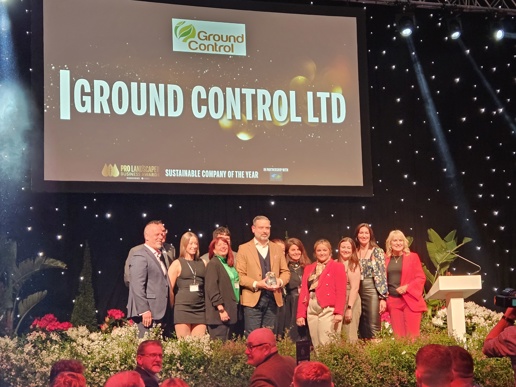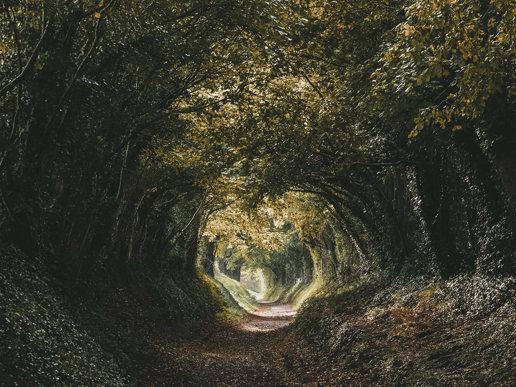Invasive Weeds: A growing concern

Invasive weeds in the UK are a growing issue for people, businesses, and the environment that they live in. They tend to spread quickly, and if unmanaged can completely take over and change their environment. They can also change ecosystems, which in extreme cases can cause larger environmental issues such as flooding.
- Non-native plants are those that occur outside their natural range due to direct or indirect introduction by humans (The Royal Horticultural Society)
To find out more, we caught up with Chris May, Ground Control Contract Manager, to understand the issues that Japanese Knot Weed and Giant Hogweed can cause, and how Ground Control can help.
What is Japanese Knotweed (JKW) and how can I recognise it?
JKW is a resilient plant that grows commonly along riverbanks, canals, motorways and rail embankments. Recognisable from its red shoots and hollow bamboo-like stems, it appears in the spring with flat-based leaves before flowering with a small white flower in later summer.

What issues can it cause for businesses?
The weed is strong enough to grow through walls and tarmac, and can therefore cause issues to infrastructure. Additionally, whilst it is not an offence to have JKW growing on your land, it is an offence to cause it to spread. This is very tricky to prevent as it spreads easily and quickly establishes in a new area.
Because of the plant’s expansive root system and ability to regenerate from small fragments, it is also very difficult to eradicate fully.
How does JKW affect the environment it grows in?
JKW grows rapidly in dense clumps and dominates an area with deep roots. It is resilient enough to grow in any soil type and as such it prevents the growth of native plants.
What should you do if you find Japanese Knot Weed on your site?
First, it is important to ‘stop the spread’. If possible, remove access to the area and do not attempt to remove the plant. Next up, contact an expert, who will create a bespoke Knotweed Management Plan to correctly identify, safely remove and consider legal requirements.

What is Giant Hogweed and how can I recognise it?
Giant Hogweed is now widespread throughout the UK. The stem of the plant grows green throughout March and April before developing into a dark red colour with purple spots during summer. The leaves are dark green with deeply cut lobes and ragged edges that can be 1 metre across and form in a rosette.
Its umbrella-like flowers only appear in their 4th year of growth and, having flowered, it dies. It thrives in any habitat but particularly where the soil has been disturbed such as riverbanks, derelict land or railway embankments.

What issues can it cause for businesses?
The plant is a danger to guests, staff, and members of the public as it contains a large amount of poisonous sap.
The sap is dangerous to people and if it makes contact with skin (and in the presence of sunlight), causes severe irritation, swelling and painful watery blisters. Burns can last several months and even once they have died down the skin can remain sensitive to light for many years.
How does Giant Hogweed affect the environment it grows in?
As its flowers, it can disperse as many as 50,000 seeds that can remain viable on or in the ground for up to 15 years. As it spreads it endangers the survival of native plants.
The loss of other vegetation may lead to excessive erosion of soil as the Giant Hogweed dies back in winter.
What should you do if you find Giant Hogweed on your site?
If you suspect Giant Hogweed on your site, it is important to contact an expert as they will have the know-how and tools to remove this safely.
It is illegal “to plant or otherwise encourage” the growth of Giant Hogweed and this could include moving surrounding soil which may contain seeds. It is therefore important not to attempt to remove this unless trained.

Ground Control wins Sustainable Company of the Year at the 2024 Pro Landscaper Business Awards

Take it or leave it: Understanding leaf litter





